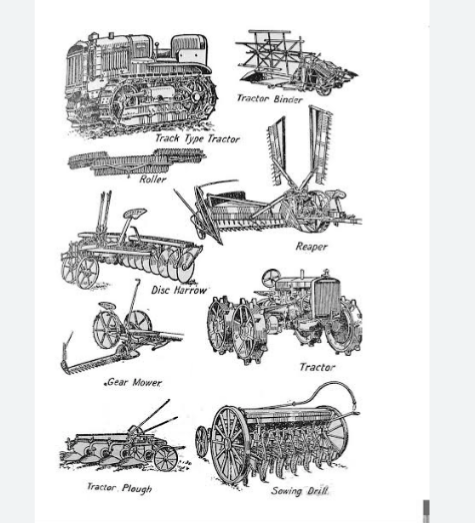
Farm mechanisation is the application of engineering principles and technology in agricultural production. Machines such as tractor, plough, Harrow, harvesters, planters, seed driller etc are used for farming operations.
OBJECTIVES OF MECHANISATION
1. Saves cost
2. Reduce human labour
3. Reduce drudgery
4. Increase efficiency
5. Saves time
ADVANTAGES OF FARM MECHANISATION
1. SAVES TIME: It ensures that farm operations are completed within a short time compared to use of manual labour.
2. IT REDUCE DRUDGERY: Manual farming operations can make farmers get tired easily. Therefore, utilization of farm machines for farming activities can help overcome drudgery
3. LARGE SCALE FARMING: Use of crude tools for farming operations can limit farmers in cultivating large area of farms. But with mechanized farming, large hectares of land can be cultivated with ease.
4. FARM HAZARDS: Farm hazards do occur due to injury caused by hand tools used for farming operation. But with mechanized farming, injuries are minimal.
5. SPECIALISATION : Most of the farm workers who operate the machines soon become specialised in the repair of the machines when they break down.
6. SAVES LABOUR: Farm mechanisation is an efficient practice that save labour cost and increase production on the long run.
7. PREVENT PRODUCE SPOILAGE: Farm mechanisation prevent wastage and spoilage of agricultural produce by providing storage facilities and processing machines that increases the shelf life of produce and products.
DISADVANTAGES OF FARM MECHANISATION
1. CAPITAL INTENSIVE: Farm mechanisation involves a huge capital investment. Capital is used for purchase of the machines, and for maintenance and care of the implements.
2. CREAT UNEMPLOYMENT : Farm machines are more efficient, faster in operation and can be used to till large hectrage of land within hours. These had made farmers and farm investors to reduce the numbers of labourers employed on their farm, rendering them unemployed.
3. SOIL COMPACTION AND ENVIRONMENTAL POLLUTION: Heavy duty machines used for land preparation do compact the soil. Also, smokes from the exhaust machines can cause environmental pollution and green house gas effect.
4. DESTRUCTION OF SOIL STRUCTURE: The mounted tillage implements do distroy the structure of the soil.
5. LIMITED IN TYPE OF FARMING : Small farmholders or peasant farmers cannot purchase farm machines to cultivate their small piece of land. It is only used for commercial farming. Also, farming systems like mixed cropping cannot be mechanized as machines are yet to be developed for such practices.
LIMITATION OF FARM MECHANISATION
1. Inadequate technical knowhow
2. Inadequate spare parts
3. It is limited to only commercial farming
4. Farmers are poor, therefore cannot purchase the farm machines which are expensive
5. Uneven land terrain may affect the utilization of the farm machines for farming operation.
PROSPECT OF FARM MECHANIZATION
1. Farmers should be given loan at reduced or no interest rate to purchase machine that will make their farming operations easier.
2. Farmers should be educated to adopt the use of machines for farming operations.
3. Land tenure system should be reviewed to make land available to farmers.
4. Farmers should be encouraged to form cooperative society where resources can be pooled together to purchase and utilize farm machines.
5. Engineers should help develop farm machines that are less expensive and affordable to farmers. And machines that can be used for operations like mixed cropping.
TILLAGE OPERATION
Tillage is the preparation of soil prior to planting and the cultivation of soil after planting. Tillage operation involves tilling, planting, fertilisation, pesticide application, harvesting, and residue management. It distroy weeds and improve soil condition. It is powered by animal like horse, bull, mulls, and donkeys etc or tractor. Mechanized tillage is highly expensive especially for peasant farmers but also to the farmers advantage to practice mechanized farming.
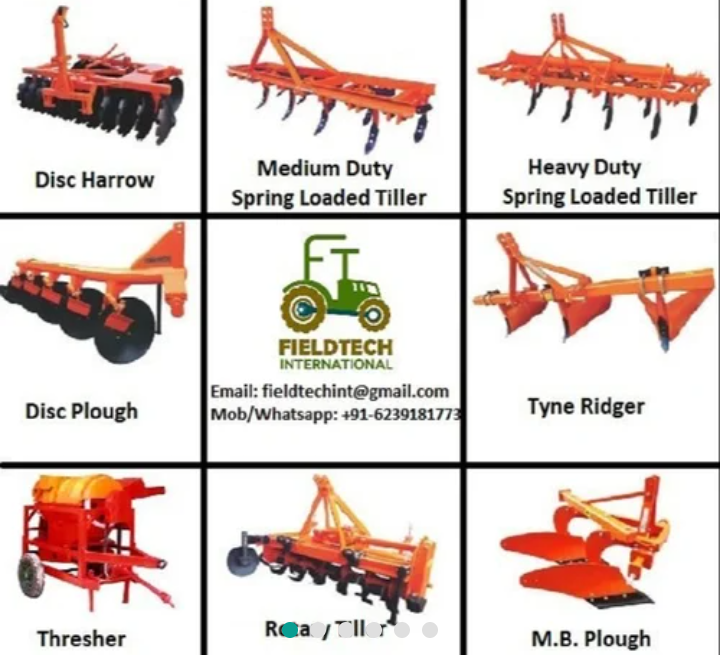
ADVANTAGES OF SOIL TILLAGE
Tillage operations are used for;
1. Prepare seed bed for planting and seed germination
2. Remove weeds on the farm
3. Destroy insect pests
4. Improves the physical conditions of the soil
5. Incorporate organic matter and crop residues into the soil.
CLASSIFICATION OF TILLAGE OPERATIONS
There are two classes of tillage operation.
a. Primary tillage operation
b. Secondary tillage operation
Farm tools and implements are used to carry out these two types of tillage operation. Farm implements are machines designed for specific farm operations. For example, planter is designed specifically for planting of seeds at precise spacing. Farm tools on the other hand are crude implements which are used manually for farm operations. Example include hoe, cutlass, takes etc.

A. PRIMARY TILLAGE OPERATIONS: Primary tillage operation is mainly ploughing of the field. During the ploughing operation, the soil is loosened, turned over, broken into clods and lumbs and weeds are destroyed. Thus, produce a rough surface on the soil. Plough drawn by animal or tractor is used to accomplish this task. Ploughing should be done on dry land. It should not be carried out when the soil is wet or during or after rain fall because the soil will become puddles or compacted. On sloppy land, ploughing should be done across the slope rather than down the slope to prevent runoff and erosion.
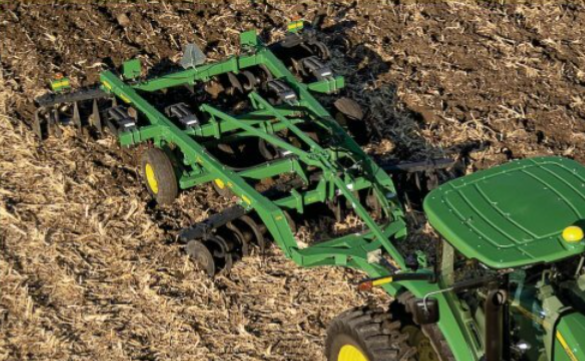
After ploughing, the soil should be left for at least two weeks to allow the turned weeds decay. This will help improve further the soil fertility and prevent nutrient loss due to removal of vegetation.
B. SECONDARY TILLAGE OPERATION
Secondary tillage operations are further tillage operations carried out during land preparation for planting. It tends to produce a smoother soil surface. Some of these operations include harrowing, ridging or mounding, inter tillage operation, etc. This tillage operation is carried out prior to planting.
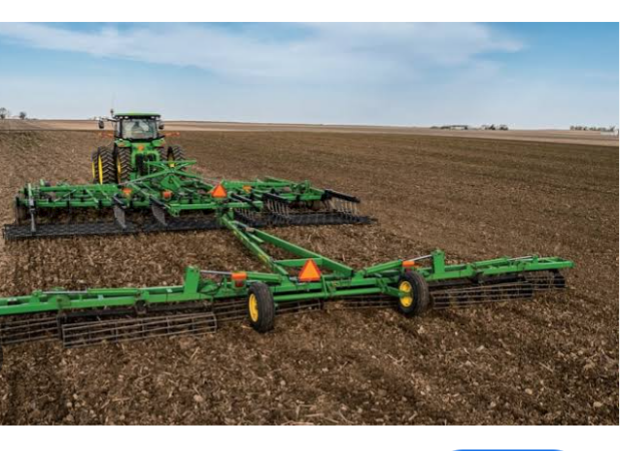
i. HARROWING: This operation is the next tillage operation after ploughing. It is carried out by a tractor driven harrow. It break up the large lumbs and clods in the soil and also create an even soil surface on the farmland. It also destroy small weeds emerging on the soil after the two weeks of ploughing. It is an alternative to manual stumping.
ii. RIDGING: Ridging operation is carried out by a tractor mounted ridger. Not all crops require ridges for growth and development. Some require flat surfaces. Crops like tuber crops such as yam, cocoyam etc require ridges. The ridge will provide good loose depth for the crop to grow and for the tubers to develop. Also, ridge is constructed at waterlogged farmlands to raise the soil and crop root zone above the waterlogged soil level. On sloppy land, ridges are made across the slope. Such ridges serve multiple purpose. They can control runoff and erosion and at the same time used for planting. Also, short ridges can be constructed at right angle to the main ridge to further help control erosion and prevent soil loss ( carried by erosion) along the furrows. Such short ridges are called cross bars.
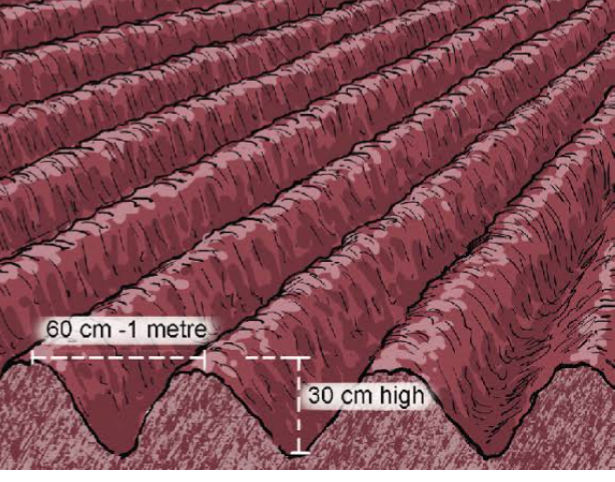
c. MOUNDING: Mound is similar to ridge. Both has a hill shape. The only difference is that each mound stand individually while ridge are mounds joint together to farm an undulating planting structure. Making of mounds is not yet mechanized. Manual construction using hand hoe is the practice till today. It serve the same purpose with ridges for planting tuber crops.
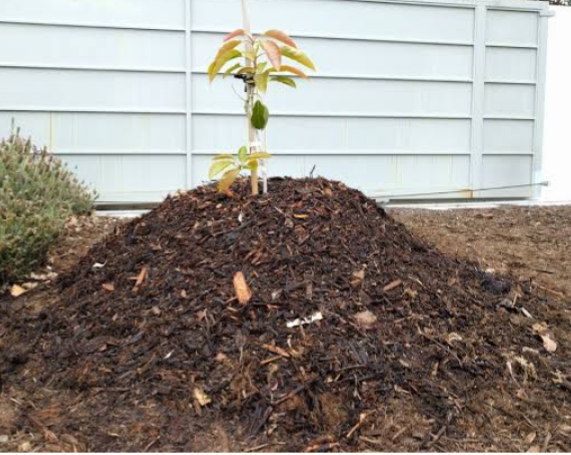
d. BED MAKING: Beds are a type of mound with flattened top and long in lenght. They are majorly used in the raising of horticultural crops and raising of seedlings in the nursery. Thus nursery beds.
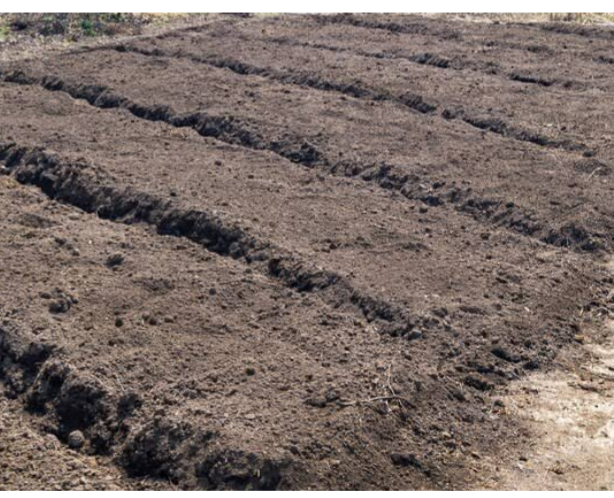
e. INTER TILLAGE: This type of secondary tillage is done between crop rows after the crop might have being established. This type of tillage is carried out to (I) control Weeds (ii) aid water infiltration to the soil.
TYPES OF TILLAGE OPERATION
Tillage operations are of two types. They include:
A. Conservation tillage
B. Intensive tillage
A. CONSERVATION TILLAGE
Conservation tillage is a practice of reducing tillage intensity and retaining plant residues. It prepares the soil for growing crops by conserving soil, water and energy resources. Instead of using plough and Harrow machines like, rippers, subsoiler, and direct drill planters are employed. Types of conservation tillage include: minimum tillage, no-tillage, ridge tillage and mulch tillage.
a. MINIMUM OR REDUCED TILLAGE : Minimum tillage is a tillage system in which ploughing and harrowing are not done. The operation is limited to operations essential to produce crops only (that is, planting of seeds only). It helps reduce soil erosion, increase soil productivity, and reduce production costs.
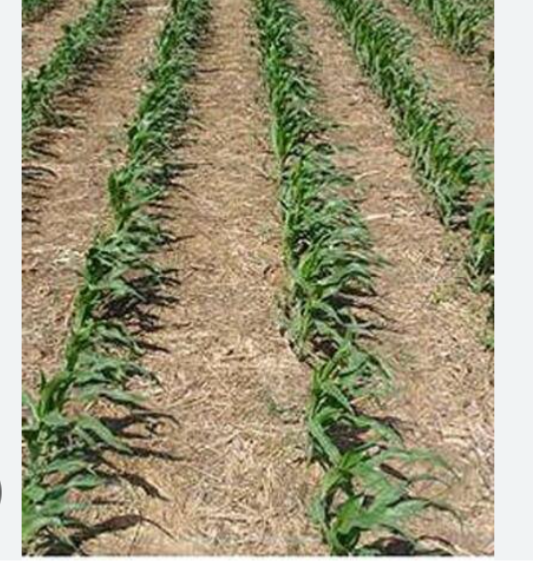
ADVANTAGES OF MINIMUM TILLAGE
i. It increases water infiltration into the soil
ii. Reduce soil compaction
iii. It is cheaper than conventional tillage as cost of ploughing and harrowing are removed
iv. Runoff and erosion are drastically reduced
v. Nutrient status of the soil is sustained etc.
b. ZERO OR NO TILLAGE: This is the farming practices in which no tillage operation is carried out. Herbicides are used to destroy weeds before planting. After weeds are distroyed, narrow slots sufficient to contain the seeds are opened in the soil and covered after planting. The only difference between minimum tillage and no tillage is the degree of soil disturbance. The soil is not disturbed in zero tillage. Crops planted when zero tillage is carried out include cereals and grain legumes.
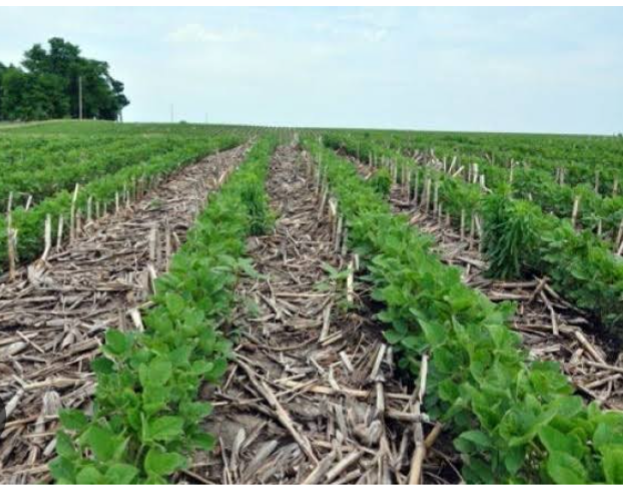
c. RIDGE-TILL : In ridge-till, the soil is left undisturbed from harvest of the previous crop to planting of the next crop except for nutrient application. Planting is done in a prepared seedbed or ridges constructed using disk openers, coulters, or row cleaners etc. Residue is left on the surface between ridges. Weed control is accomplished with herbicides and/or cultivation. Damaged ridges are rebuilt during cultivation.
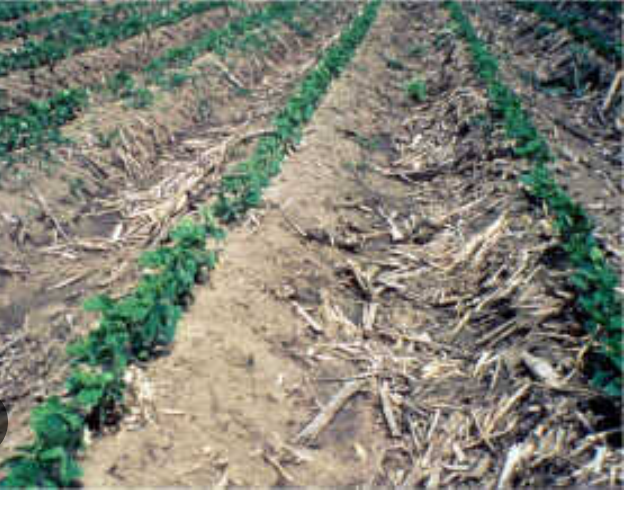
d. MULCH-TILL : Mulch-till includes all conservation tillage practices other than no-till and ridge-till. It is a system in which crop residues or other mulching materials from the farm are left on the surface, and subsurface tillage leaves them relatively undisturbed. In dryland areas, mulch is left on the surface while in more humid regions mulch is buried in the soil.
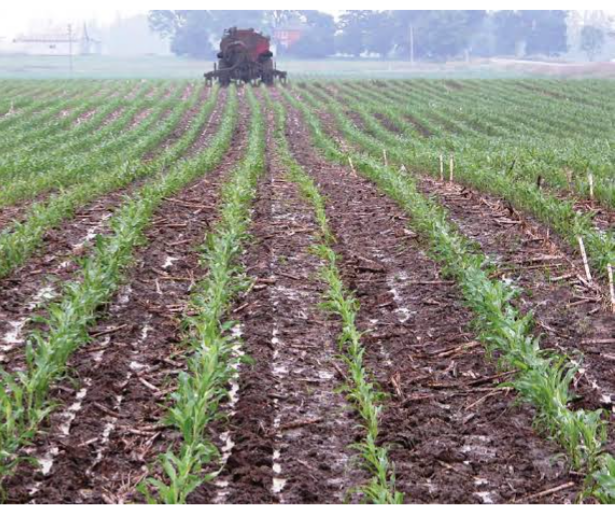
Planting is accomplished with disk openers that go through several inches of mulch. When the mulch materials decompose, the crops are deprived of nitrogen. Therefore, extra fertilizer is often placed below the mulch in humid areas. The soil is disturbed before planting. Tillage tools such as chisels, field cultivators, disks, sweeps or blades are used. Weed control is accomplished with herbicides and/or cultivation. Two tillage practices that fall into this tillage category are zone-till and strip-till. Both of these tillage practices involve tilling a strip into which seed and fertilizer are placed
B. INTENSIVE TILLAGE
Intensive tillage, also known as conventional tillage involves multiple operations of primary and secondary tillage operations whereby implements such as a mold board, disk, or chisel plough are used. After this, a finisher with a harrow, rolling basket, and cutter can be used to prepare the seed bed. It typically includes different surface tillage operations to bury surface residue. These systems generally involve ploughing or some other form of intensive tillage.
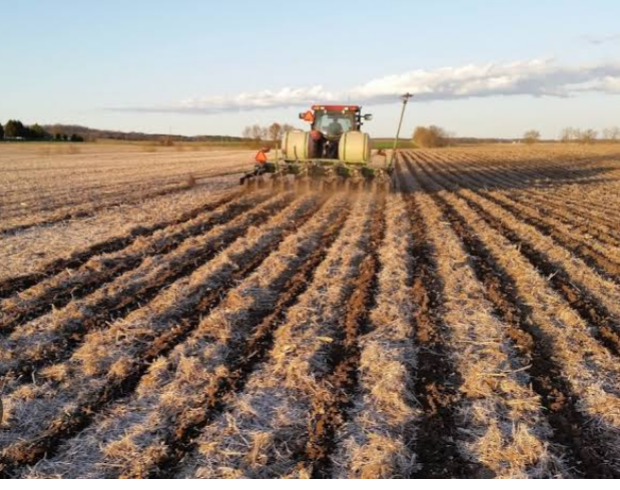
Both intensive and conservation tillage differs in that conservation tillage like strip-till with the goal of minimum soil manipulation is necessary for a successful crop production. It is a tillage method that does not turn the soil over, in contrast to intensive tillage, which changes the soil structure using ploughs.
